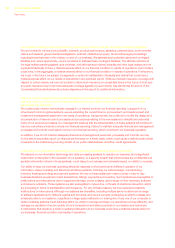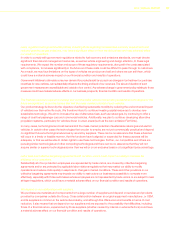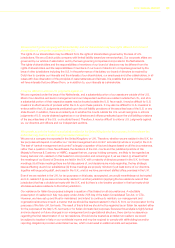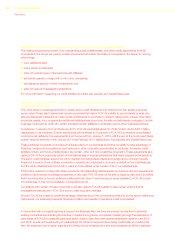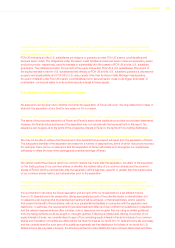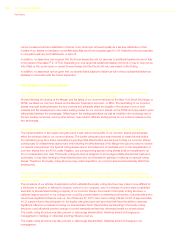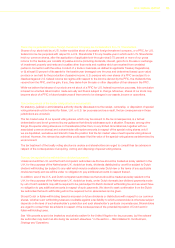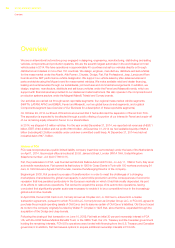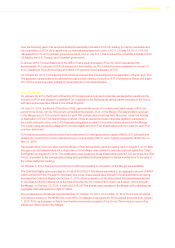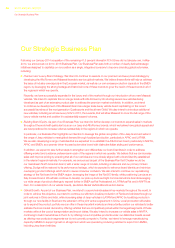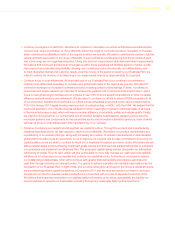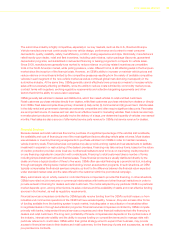Chrysler 2014 Annual Report Download - page 36
Download and view the complete annual report
Please find page 36 of the 2014 Chrysler annual report below. You can navigate through the pages in the report by either clicking on the pages listed below, or by using the keyword search tool below to find specific information within the annual report.
34 2014 | ANNUAL REPORT
Risk Factors
can be no assurance that a distribution of Ferrari or any other spin-off would qualify as a tax-free distribution or that
holders of our shares or mandatory convertible securities would not recognize gain for U.S. federal income tax purposes
in connection with any such distribution or spin-off.
In addition, no assurance can be given that the Ferrari separation will not give rise to additional taxable income in Italy
in the hands of the Italian P.E. of FCA. Depending on how large this additional taxable income is, it may or may not be
fully offset by the current year or carried forward losses that the Fiscal Unit may use based on the Ruling.
In addition, no assurance can be given that our shareholders subject to Italian tax will not incur substantial Italian tax
liabilities in connection with the Ferrari separation.
Risks Related to our Common Shares
Our maintenance of two exchange listings may adversely affect liquidity in the market for our common shares and
could result in pricing differentials of our common shares between the two exchanges.
Shortly following the closing of the Merger and the listing of our common shares on the New York Stock Exchange, or
NYSE, we listed our common shares on the Mercato Telematico Azionario, or MTA. The dual listing of our common
shares may split trading between the two markets and adversely affect the liquidity of the shares in one or both
markets and the development of an active trading market for our common shares on the NYSE and may result in price
differentials between the exchanges. Differences in the trading schedules, as well as volatility in the exchange rate of
the two trading currencies, among other factors, may result in different trading prices for our common shares on the
two exchanges.
The loyalty voting structure may affect the liquidity of our common shares and reduce our common share price.
The implementation of the loyalty voting structure could reduce the liquidity of our common shares and adversely
affect the trading prices of our common shares. The loyalty voting structure was intended to reward shareholders
for maintaining long-term share ownership by granting initial shareholders and persons holding our common shares
continuously for at least three years at any time following the effectiveness of the Merger the option to elect to receive
our special voting shares. Our special voting shares cannot be traded and, immediately prior to the deregistration of
common shares from the FCA Loyalty Register, any corresponding special voting shares shall be transferred to us
for no consideration (om niet). This loyalty voting structure is designed to encourage a stable shareholder base and,
conversely, it may deter trading by those shareholders who are interested in gaining or retaining our special voting
shares. Therefore, the loyalty voting structure may reduce liquidity in our common shares and adversely affect their
trading price.
The loyalty voting structure may make it more difficult for shareholders to acquire a controlling interest, change our
management or strategy or otherwise exercise influence over us, and the market price of our common shares may be
lower as a result.
The provisions of our articles of association which establish the loyalty voting structure may make it more difficult for
a third party to acquire, or attempt to acquire, control of our company, even if a change of control were considered
favorably by shareholders holding a majority of our common shares. As a result of the loyalty voting structure, a
relatively large proportion of our voting power could be concentrated in a relatively small number of shareholders who
would have significant influence over us. As of February 27, 2015, Exor had a voting interest in FCA of approximately
44.31 percent due to its participation in the loyalty voting structure and as a result will have the ability to exercise
significant influence on matters involving our shareholders. Such shareholders participating in the loyalty voting
structure could effectively prevent change of control transactions that may otherwise benefit our shareholders.
The loyalty voting structure may also prevent or discourage shareholders’ initiatives aimed at changing our
management or strategy or otherwise exerting influence over us.
The loyalty voting structure may also prevent or discourage shareholders’ initiatives aimed at changes in our
management.


